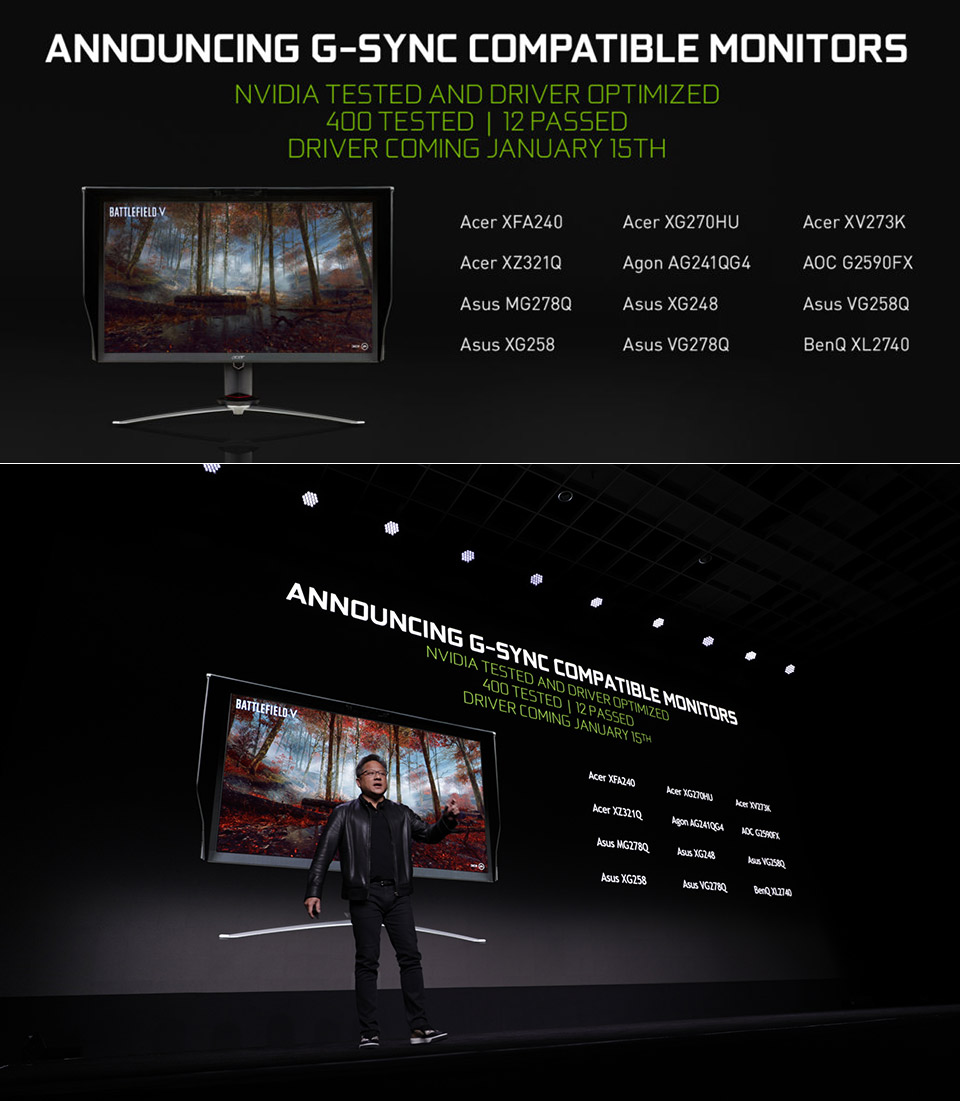
For those unfamiliar with NVIDIA G-Sync, it’s basically a proprietary adaptive sync technology developed aimed primarily at eliminating screen tearing and the need for software alternatives such as Vsync. It eliminates screen tearing by allowing a video display to adapt to the frame rate of the output device (GPU) rather than it adapting to the display, which could traditionally be refreshed halfway through the process of a frame being output by the device, resulting in screen tearing, or two or more frames being shown at once. NVIDIA announced at CES 2019 that it would support some of AMD’s FreeSync displays, thanks to a new GeForce GPU driver. Read more for another video and additional information.
The catch is that out of the 400 Adaptive Sync monitors NVIDIA tested, just 12 of them have passed all the requirements needed for the GeForce driver enable the G-Sync support by default. However, there is a workaround as those with a GeForce card and a FreeSync monitor can enable adaptive sync manually in NVIDIA’s control panel once the new driver is installed.
“In a demonstrations of NVIDIA’s FreeSync support, we saw excessive ghosting on one monitor that has FreeSync 2 support, with a second monitor exhibiting far more annoying ‘blanking’ where the screen would go black for a few noticeable milliseconds,” according to PC World.
